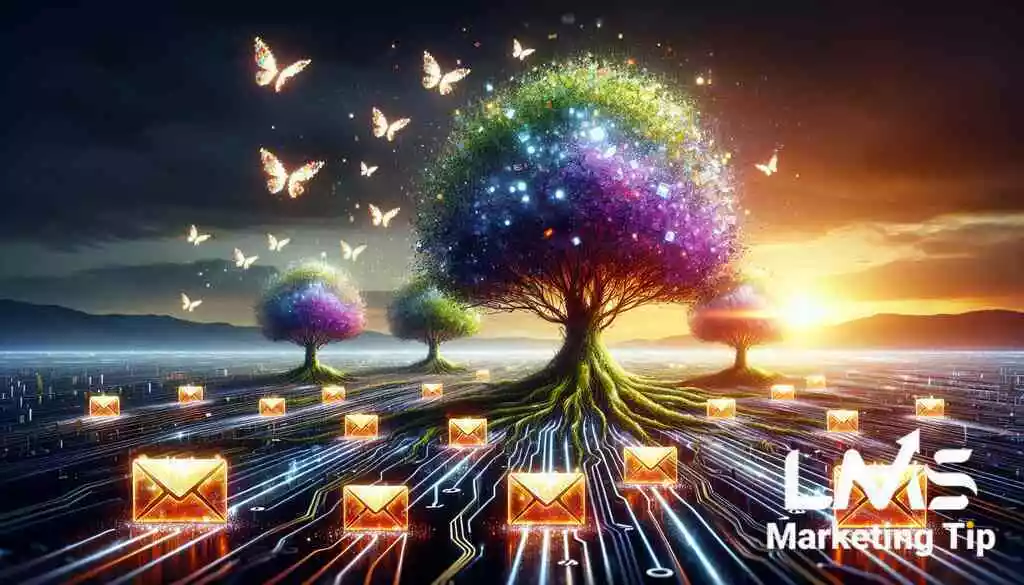
Unlocking the Potential of Email Marketing
Understanding the Basics of Email Marketing
Email marketing is a powerful tool that allows businesses to communicate directly with their audience through their inboxes. At its core, email marketing involves sending out emails to a list of subscribers to promote products and services or convey important company information. The effectiveness of email marketing lies in its ability to provide valuable content to subscribers who have already expressed interest in your business by opting into your email list. This creates a direct line of communication that can be personalized and scaled, making it a crucial aspect of any digital marketing strategy.
To implement successful email campaigns, it’s essential to understand the mechanics of email marketing. This includes knowing how to craft compelling subject lines that encourage opens, design emails that are engaging and easy to read, and create content that resonates with your target audience. Additionally, adhering to email marketing laws and regulations ensures that your campaigns are compliant and ethical, fostering trust with your recipients.
Importance of Email in the Digital Marketing Mix
Email marketing plays a pivotal role in the digital marketing mix, offering advantages that few other channels can. It provides a unique blend of scalability and personalization that can lead to high engagement rates and significant ROI. Unlike social media platforms, where algorithm changes can limit your reach, emails land directly in the inboxes of those who have shown a direct interest in your brand, giving you a captive audience for your messages.
One of the most compelling reasons to invest in email marketing is its ability to nurture leads and convert them into customers. Through targeted and well-timed email campaigns, businesses can guide potential customers through the sales funnel, from awareness to consideration and, ultimately, to the decision stage. This is achieved by offering valuable content and relevant offers that meet the recipient’s needs and interests, thereby increasing the likelihood of conversion.
Setting Objectives for Your Email Marketing Strategy
Having clear objectives is crucial when planning your email marketing strategy. Setting goals helps measure success and provides direction for your campaigns. Objectives can range from increasing brand awareness to driving website traffic, generating leads, or boosting sales conversions. By defining what you hope to achieve, you can design your email campaigns with purpose and clarity.
When setting objectives, it’s essential to make them specific, measurable, achievable, relevant, and time-bound (SMART). For instance, aiming to increase your email list by 20% within six months is a SMART goal that guides your strategy towards list-building initiatives. Additionally, aligning your email marketing objectives with your overall business goals ensures that your efforts contribute directly to your company’s success.
To maximize your email marketing effectiveness, consider integrating expert guidance. This can provide you with insights and techniques to enhance your campaigns, ensuring you meet or exceed your strategic objectives.
Building a Strong Subscriber List
Opt-in Strategy Fundamentals
The foundation of a robust email marketing campaign is a strong subscriber list. Achieving this begins with effective opt-in strategies for increasing subscriber lists. An opt-in strategy ensures that you’re building a list of engaged and interested recipients who choose to receive your emails. This voluntary sign-up process is critical for compliance with email marketing laws and enhances the quality of your subscriber base. Emphasizing clear and transparent opt-in methods, such as single or double opt-in processes, not only builds trust with your audience but also improves the deliverability and effectiveness of your campaigns.
Opt-in strategies should be straightforward, offering potential subscribers clear information on what they’re signing up for, including the type of content they’ll receive and how often. This clarity helps set the right expectations and fosters a relationship built on transparency and consent, essential elements for successful email marketing.
Creating Compelling Sign-up Incentives
Attracting subscribers often requires more than just asking. Creating compelling sign-up incentives is a powerful tactic to encourage users to join your email list. From offering discounts and ebooks to free trials and exclusive access to content, incentives need to provide real value that resonates with your target audience’s needs and interests.
When designing these incentives, consider what your audience finds valuable and tailor your offerings accordingly. This approach not only increases sign-up rates but also starts the subscriber relationship on a positive note, increasing the likelihood of high engagement with your future emails.
Leveraging Social Media Platforms for List Building
In today’s digital marketing landscape, social media is a crucial tool for expanding your email list. By leveraging social media for list enhancement, you can tap into a broader audience that is already engaged with your brand online. Integrating email sign-up calls-to-action in your social media profiles, posts, and ads provides an accessible route for your followers to join your email list directly from these platforms.
Cross-promoting your email content on social media can also spark interest among your social followers, making the transition from social media fan to email subscriber a natural progression. This strategy not only enhances your list with new subscribers but also reinforces your overall digital marketing efforts across multiple channels.
Maintaining List Hygiene for Optimal Engagement
An often overlooked yet critical aspect of building a solid subscriber list is maintaining list hygiene. This involves regularly cleaning your email list by removing inactive subscribers, correcting or removing invalid email addresses, and segmenting your list based on subscriber activity and preferences. Good list hygiene practices improve your email deliverability rates, engagement, and overall campaign performance.
Regularly assessing and updating your email list ensures that your messages are reaching actively engaged subscribers, thereby maximizing the impact of your email marketing efforts. This continuous process of refinement and optimization is critical to maintaining a healthy and responsive subscriber list, which forms the backbone of effective email marketing.
Crafting Targeted Email Campaigns
The Power of Segmentation in Personalization
Personalization has revolutionized email marketing, transforming generic broad-spectrum blasts into highly targeted, engaging messages that speak directly to the recipient. At the heart of this transformation is segmentation, the practice of dividing your email list into smaller, more specific groups. These groups can be based on various factors such as demographics, purchase history, or engagement levels. By utilizing segmentation and personalization in targeted email campaigns, marketers can deliver content that is specifically tailored to the interests and needs of each segment, significantly increasing open rates, click-through rates, and overall campaign effectiveness. This strategy not only boosts engagement but also fosters a closer relationship between the brand and its customers by addressing individual preferences and behaviors.
To effectively segment your list, start by analyzing your customer data to identify common characteristics and behaviors. From there, create persona-based segments that allow you to craft messages that resonate on a personal level. Whether it’s a tailored promotion or content that addresses specific concerns or interests, segmentation ensures your emails are relevant and valuable to each recipient.
Designing Emails with Responsive Design
With the ubiquity of smartphones and tablets, designing emails that look great and function well on any device is crucial. Responsive web design ensures that your emails automatically adjust to fit the screen they’re being viewed on, offering a seamless experience whether your subscriber is on a desktop, tablet, or smartphone. Incorporating responsive web design for emails is not just a recommendation; it’s a necessity in today’s mobile-centric world.
Responsive design involves using fluid layouts, flexible images, and media queries to adapt your email’s layout so that it renders optimally across different device sizes. This design approach improves readability, usability, and engagement by providing a consistent experience that doesn’t require pinching, zooming, or scrolling horizontally. For marketers, ensuring your emails are mobile-friendly can significantly impact your campaign’s success, as a substantial portion of emails are first opened on a mobile device.
Tailoring Messages to Subscriber Behavior and Preferences
Beyond segmentation, tailoring messages to reflect an individual subscriber’s behavior and preferences adds another layer of personalization that can dramatically enhance engagement and conversions. This tactic involves analyzing data like past purchases, email interaction history, and website browsing behavior to create highly relevant and timely messages that cater to each subscriber’s unique interests and needs.
For instance, sending a follow-up email with related product recommendations after a purchase or a gentle reminder about items left in a shopping cart are examples of how tailored messages can be used to encourage action while providing value to the recipient. By paying close attention to subscriber behavior and preferences, marketers can craft emails that feel personal and attentive, strengthening the customer relationship and driving loyalty.
Implementing Marketing Automation for Efficiency
Marketing automation streamlines your email marketing strategy by sending personalized, targeted emails to different segments of your audience at the optimal time. By implementing marketing automation to boost efficiency, businesses can ensure that their email campaigns reach the right people with the right message without requiring constant manual intervention.
Automation tools allow you to set up triggers based on specific actions or criteria, such as welcoming new subscribers with a series of onboarding emails or re-engaging inactive subscribers with personalized content. This not only saves time and resources but also enhances the effectiveness of your email campaigns by delivering timely, relevant messages that encourage engagement and conversions. Moreover, marketing automation provides valuable insights into subscriber behavior and campaign performance, enabling continuous optimization and personalization of your email marketing efforts.
Enhancing Engagement with Dynamic Content
Crafting Compelling Email Content
Creating content that resonates with your audience is the cornerstone of any successful email marketing campaign. The content should not only inform but also entertain and inspire your subscribers to take action. To achieve this, start by clearly understanding your target audience’s needs, preferences, and pain points. Tailored content that addresses these aspects will be more engaging and effective. Incorporate storytelling to make your messages more relatable and memorable, weaving in relevant anecdotes or customer stories that spotlight your products or services. It’s crucial to maintain a balance between promotional content and informational value, ensuring each email adds significant worth to the reader’s inbox. Lastly, always offer clear, actionable steps they can take after reading your email, whether it’s visiting a website, signing up for a webinar, or making a purchase.
The Role of Visuals in Email Engagement
Visuals play a pivotal role in enhancing email engagement by breaking up text and making content more digestible and appealing. Incorporate high-quality images, infographics, and videos that complement your text and add value to your message. Visual content can help illustrate complex ideas quickly and effectively, capturing attention and encouraging recipients to spend more time with your email. It’s also worth considering the branding aspect, ensuring that the visuals used are consistent with your brand identity to create a cohesive and recognizable look across all communications. The synergy of compelling visuals and well-crafted text can significantly enhance the overall impact of your email marketing efforts, making every email a visually engaging experience for the recipient.
Interactive Elements in Emails
To truly engage and delight your audience, integrating interactive elements into your emails can be a game-changer. Features like interactive polls, surveys, or quizzes invite participation, transforming passive reading into an active experience. Adding elements such as animated buttons or collapsible sections can also enhance the user experience by making your emails not only more engaging but also more fun to interact with. Personalized recommendations based on past purchases or browsing behavior can be included through dynamic content blocks, offering a customized experience for each subscriber. These interactive features not only increase engagement rates but also provide valuable insights into your subscribers’ preferences and behaviors, which can inform future content and offers.
A/B Testing for Maximizing Open and Click-Through Rates
A/B testing is an invaluable tool for optimizing your email campaigns to achieve the highest open and click-through rates. By creating two versions of an email with variations in elements such as the subject line, call to action (CTA), email copy, or layout, marketers can determine which version resonates more with their audience. This approach allows for data-driven decisions that can significantly improve the performance of your emails. Testing one variable at a time ensures clarity in results and actionable insights. Regularly employing A/B testing for email optimization helps in understanding your audience better, refining your email strategy based on concrete data, and ultimately enhancing the effectiveness of your marketing efforts. Leading to not just higher engagement rates but also improved conversion rates, A/B testing should be an integral part of your email marketing strategy to refine and enhance your communications continually.
Optimizing Conversion Through Strategic Calls to Action
Designing Effective Calls to Action
The call to action (CTA) is a pivotal element in email marketing that propels subscribers towards the desired action, be it making a purchase, signing up for a webinar, or downloading a guide. Crafting effective CTAs starts with clarity and conciseness, ensuring that the message conveys urgency and benefit in a few compelling words. Using action-oriented language that evokes enthusiasm and a sense of immediacy can significantly improve click-through rates. Additionally, the visual design of CTAs, including button color, size, and placement within the email, plays a critical role in attracting attention and encouraging clicks. It’s beneficial to experiment with different CTA designs and messaging to understand what resonates best with your target audience, leveraging insights to refine your approach for maximum engagement and conversion.
Positioning and Frequency of CTAs in Emails
The strategic positioning of CTAs within an email can significantly influence the effectiveness of your campaign. Ideally, a CTA should be placed high enough in the email to be seen without scrolling, capturing immediate attention. However, including multiple CTAs at the beginning, middle, and end of the email content caters to readers at different stages of engagement, increasing the overall opportunity for action. Balancing the frequency of CTAs is crucial; too many can overwhelm or annoy the receiver, while too few may miss opportunities for conversion. Ensuring that each CTA is contextually relevant to the surrounding content and offers clear value to the recipient is essential for optimizing conversion rates.
Measuring and Analyzing CTA Performance
To truly excel in email marketing, it is vital to measure and analyze the performance of CTAs continually. Key metrics such as click-through rates (CTR) and conversion rates provide direct insights into the effectiveness of your CTAs. Analyzing these metrics allows marketers to identify which CTAs are driving action and which might be falling flat. This analysis should extend beyond individual campaigns, looking at trends over time to inform broader optimizations in strategy. Moreover, A/B testing different CTA elements’ wording and design to placement can unveil valuable insights, enabling continuous improvement. Armed with comprehensive analytics, marketers can fine-tune CTAs to better align with audience preferences and behaviors, ultimately boosting engagement and conversions across email marketing campaigns.
Measuring Success and Refining Strategies
Essential Email Marketing Metrics to Track
In the realm of email marketing, understanding and tracking specific metrics is crucial for gauging the effectiveness of your campaigns and strategies. Click-through rates (CTRs) and open rates stand as the primary indicators of initial engagement, revealing how compelling your subject lines and content are to your audience. Beyond these, conversion rates tell you how effectively your email has motivated recipients to take a desired action, be it making a purchase or filling out a contact form. Equally important, bounce rates and list growth rates offer insights into the health and expansion of your subscriber list over time. Monitoring these key metrics provides a foundational assessment of your email marketing performance, setting the stage for deeper analysis and optimization.
Using Email Analytics for Insightful Feedback
Email analytics serve as a treasure trove of feedback, offering a detailed look at how subscribers interact with your emails. Platforms offering these analytics empower marketers with data on how different segments respond to various messages, allowing for granular analysis of preferences and behaviors. For instance, you can discern which content formats or topics drive the most engagement or identify the best times and days for sending emails to maximize opens and reads. Incorporating digital marketing enhancements that leverage sophisticated analytics tools can refine your understanding of your audience’s needs and preferences, informing your strategy and content creation process. Utilizing these insights ensures your campaigns are continuously aligned with subscriber interests, maximizing the relevance and impact of your communications.
Fine-tuning Strategies Based on Data
The accumulation of email marketing data over time presents an invaluable opportunity for refining your marketing strategies. Analyzing trends, patterns, and anomalies within your metrics can uncover actionable insights, guiding strategic adjustments for improved performance. For example, if data reveals a significant drop in engagement with your current email format, experimenting with new layouts or content types may rejuvenate subscriber interest. Similarly, identifying high-performing emails can inform the development of future campaigns that replicate successful elements. This data-driven approach to strategy refinement ensures your email marketing evolves in step with your audience’s preferences, optimizing your efforts for better results.
Implementing Lead Nurturing and Drip Campaigns for Long-term Engagement
Lead nurturing and drip campaigns represent sophisticated strategies that leverage email marketing to maintain and strengthen engagement over time. By lead nurturing through email campaigns, marketers can provide consistent, valuable content tailored to each stage of the customer journey, from awareness to consideration and decision-making. Drip campaigns automate this process, delivering a series of emails based on triggers or predefined schedules, guiding leads closer to conversion with each interaction. These tactics ensure sustained engagement by providing relevant, helpful content that aligns with the recipient’s current needs and interests, gradually building trust and credibility that culminates in successful conversions and long-lasting customer relationships.
Beyond the Inbox: Integrating Email with Other Marketing Efforts
Synergizing Email with Social Media Marketing
Integrating email marketing with social media strategies amplifies the strengths of both channels. By syncing email campaigns with social media efforts, businesses can create a cohesive digital footprint that engages audiences on multiple fronts. Encouraging your email subscribers to follow your social media profiles not only extends the reach of your message but also offers additional engagement opportunities that build community and brand loyalty. Incorporate social sharing buttons in your emails to make it easy for readers to share your content, enhancing exposure and potentially attracting new subscribers. This cross-channel promotion leverages the power of your existing audience, turning email subscribers into social advocates.
Email and Content Marketing: A Powerful Duo
Email marketing and content marketing are two sides of the same coin, both aiming to provide value and build lasting relationships with audiences. By integrating high-quality, relevant content into your email campaigns, you make each message a valuable asset to your subscribers. Sharing blog posts, guides, videos, or infographics through email not only educates and entertains your audience but also drives traffic back to your website, encouraging more profound engagement with your brand. This strategy reinforces your position as an industry authority and keeps subscribers looking forward to your emails, knowing there’s always something new and valuable waiting for them.
Leveraging SEO and Email Marketing for Increased Visibility
SEO and email marketing may seem like two distinct strategies, but when combined, they can significantly enhance your online visibility. Capitalizing on the search engine optimization basics within your email content, such as keywords and links to your website, can boost your SEO efforts. By directing email traffic to SEO-optimized landing pages or blog posts, you’re not only providing valuable content to your subscribers but also improving your site’s search engine ranking. This synergistic approach ensures that your content reaches a broader audience, both through direct email engagement and increased online search visibility, making it a win-win for both your email marketing and SEO strategies.
Cross-promotion Strategies for Maximizing Reach
To truly maximize the reach of your email marketing efforts, employing cross-promotion strategies can be incredibly effective. This involves partnering with complementary businesses or influencers and featuring each other’s products, services, or content in your respective email campaigns. This approach not only broadens your audience by introducing your brand to potential new subscribers but also adds value to your existing subscribers by introducing them to helpful resources or products. Integrating maximizing reach with cross-promotion email strategies ensures that your campaigns not only engage your current base but also tap into new segments, fostering growth and creating new opportunities for engagement and conversion. By carefully selecting partners whose offerings align with your audience’s interests, these cross-promotions feel natural and relevant, further enhancing the perception of your brand.
Sealing the Deal: Mastering Email Marketing Tactics
In an era where digital presence dictates market success, mastering email marketing tactics becomes indispensable. This section dives into advanced strategies to elevate engagement, rekindle relationships with dormant subscribers, and solidify your brand experience, all while ensuring your campaigns are primed for the increasingly mobile world.
Re-engagement Emails to Awaken Dormant Subscribers
Re-engagement campaigns play a pivotal role in rekindling interest among subscribers who have disengaged over time. A thoughtfully crafted re-engagement email can remind your dormant subscribers of the value your brand offers, encouraging them to reinitiate their journey with you. Start by segmenting your list to identify subscribers who haven’t interacted with your emails over a specific period, then tailor your messages to address their potential reasons for disengagement. Enticing subject lines, personalized content that recaps what they’ve missed, and exclusive offers can reignite interest and persuade them to engage once again. Moreover, feedback solicitation within these emails can provide valuable insights into improving your email strategy, ensuring you maintain a vital connection with your audience.
Welcome Emails to Build Immediate Engagement
Creating engagement with welcome emails is your first step towards establishing a lasting relationship with new subscribers. These initial interactions set the tone for your email communications, making it crucial to leave a positive and lasting impression. Welcome emails should not only introduce your brand but also highlight the benefits of being an email subscriber. Including a special welcome offer or exclusive content can significantly boost engagement from the get-go. This is your opportunity to demonstrate the immediate value of your email list, encouraging new members to look forward to your future communications.
Creating a Seamless Brand Experience Across All Email Touchpoints
Ensuring consistency across all email touchpoints strengthens your brand identity and enhances the subscriber experience. From welcome emails to regular newsletters and re-engagement campaigns, each interaction should reflect your brand’s voice, values, and aesthetic. This consistency builds trust and familiarity, making your brand easily recognizable in a crowded inbox. Incorporating elements like your logo, brand color scheme, and a consistent tone of voice not only reinforces brand recall but also contributes to a cohesive user experience. Tailoring content to align with your audience’s expectations and interests across all emails further personalizes the experience, solidifying their connection to your brand.
Embracing Mobile Optimization for On-the-go Subscribers
With the majority of emails now being accessed on mobile devices, embracing mobile optimization for email receivers is critical. Mobile-optimized emails ensure that your content is easily readable and interactable across all screen sizes, providing a seamless experience for subscribers on the go. This involves using responsive design techniques, optimizing image sizes, and ensuring CTAs are easily clickable on a touchscreen. By accommodating the mobile preferences of your audience, you enhance engagement and improve the effectiveness of your email campaigns. Additionally, mobile optimization signals to your subscribers that your brand prioritizes their convenience and is adept at adapting to the evolving landscape of digital communication.
Incorporating these advanced email marketing tactics into your strategy not only revitalizes your engagement efforts but also ensures that your brand remains relevant and top-of-mind amongst your subscribers. From reactivating dormant fans to making a memorable first impression and cementing your brand presence at every digital touchpoint, the key lies in persistently adapting your approach to meet and exceed subscriber expectations. Coupled with a commitment to mobile optimization, these strategies equip businesses to effectively navigate the ever-changing terrain of email marketing, driving both engagement and conversions.
Frequently Asked Questions
Question: What key factors contribute to an effective opt-in strategy for building a subscriber list?
Answer: An effective opt-in strategy is fundamental to building a robust subscriber list and is pivotal for any successful email marketing campaign. At Marketing Tip, we emphasize the importance of clarity and value in the sign-up process. A clear explanation of what the subscribers are signing up for, alongside compelling sign-up incentives, can significantly increase your opt-in rates. Incorporating double opt-in processes not only ensures compliance with email marketing laws but also enhances the quality of your subscriber list by verifying each subscriber’s interest. Our expertise guides businesses through crafting transparent, value-driven opt-in strategies that effectively grow their subscriber base while establishing trust with potential customers.
Question: How can segmentation and personalization improve my email marketing campaigns?
Answer: Segmentation and personalization are cornerstone tactics in email marketing, leading to higher engagement rates and improved campaign performance. By dividing your subscriber list into smaller, targeted segments based on specific criteria such as demographics, purchase history, or engagement levels, Marketing Tip assists businesses in tailoring their messages to meet the unique needs and interests of each group. Personalization extends beyond just addressing a subscriber by name; it involves crafting content that resonates on a personal level based on the data collected. Our strategies help businesses leverage segmentation and personalization to deliver relevant, compelling content that captivates audiences and drives conversions.
Question: What best practices does Marketing Tip recommend for crafting engaging email content?
Answer: Engaging email content is the bedrock of successful email marketing strategies. Marketing Tip advocates for a harmonious blend of informative and entertaining content tailored to the audience’s preferences and pain points. Incorporating storytelling, utilizing high-quality visuals, and integrating interactive elements can significantly enhance the email’s appeal. We also stress the importance of clear, actionable calls-to-action (CTAs) to guide subscribers toward the desired action. By understanding the target audience profoundly and leveraging a mix of content types, businesses can create emails that not only capture attention but also motivate subscribers to engage with the brand meaningfully.
Question: In the blog ‘What Are The Best Email Marketing Tactics?’, what strategies are suggested for optimizing email campaigns for mobile devices?
Answer: Recognizing the prevalence of mobile device usage for checking emails, the blog ‘What Are The Best Email Marketing Tactics?’ highlights the critical importance of mobile optimization. Marketing Tip suggests employing responsive design to ensure emails look great and function perfectly across all devices. This includes using fluid layouts and flexible images and ensuring CTAs are easily clickable. Additionally, optimizing email content to be concise and engaging with an emphasis on fast-loading visuals is essential for keeping the mobile audience engaged. By adhering to these practices, businesses can ensure their email campaigns are effective in reaching and engaging subscribers, irrespective of the device they use.
Question: How can A/B testing improve the performance of email marketing campaigns?
Answer: A/B testing is a powerful tool for enhancing the effectiveness of email marketing campaigns. By comparing two versions of an email to see which performs better on a specific variable, businesses can gain insights into subscriber preferences and behaviors. Marketing Tip leverages A/B testing to refine aspects like subject lines, email copy, CTAs, and layout, enabling data-driven decisions that boost open rates, click-through rates, and conversions. We guide businesses through setting up, conducting, and analyzing A/B tests, helping them to continuously improve their email campaigns based on empirical data continuously, ultimately achieving higher engagement and more effective communication with their audience.











